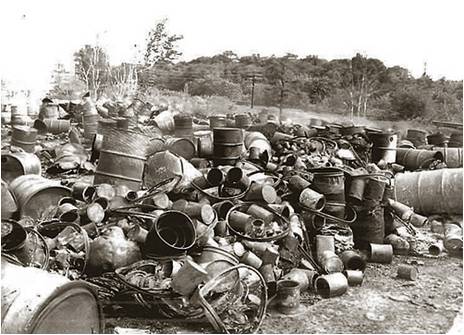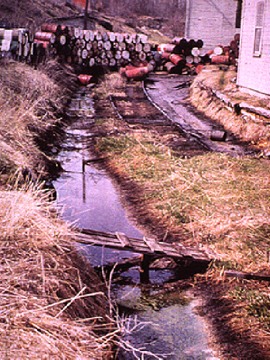Woburn - Early History
|
Woburn was established as a settlement in the early 1640s. For many years it was primarily an agricultural community, but the first tanning enterprise began in 1648, and Gershom Flagg built a house and tannery next to the Town Meeting Hall in 1668. Shoe making shops began to appear in the late 1600s, and more small tanneries appeared, although agriculture was the foundation of the economy until the 1800s. Industry gradually grew, largely because of the abundant water supply and transportation afforded by the Aberjona River and the Middlesex Canal, which opened in 1803 (depicted on the right; image source: http://library.uml.edu/clh/MidCan.html). Development was also boosted by opening of the Boston & Lowell Railroad in 1835 and the Woburn Loop of the railroad in 1844. Woburn's proximity to Boston and the ability to transport materials and goods via the waterways and railroad enabled the tanning, shoemaking, and other industries to thrive in the 1800s. The demand for shoes and boots during the Civil War provided yet another boost to the economy of the region. Shoe making was the principal industry in Woburn for many years, but eventually leather production eclipsed the shoe making industry. Tanneries were so central to the the economy of Woburn that the Woburn High School mascot became the "Tanner." |
|
The History of Pollution in Woburn, MA
In 1853 Robert Eaton founded Woburn Chemical Works in the vicinity of what is now known as the Woburn Industri-Plex in northeastern Woburn; the company supplied chemicals needed in local tanneries, textile mills, and the leather and paper industries. The company was later acquired by the Merrimac Chemical Company, which in turn was purchased by the Monsanto Chemical Company in 1929. In 1934 the property was sold to the New England Chemical Company, which was later purchased by Consolidated Chemical Company and then to the Stauffer Chemical Company, which remained in operation until 1969.
|
|
|
For over a hundred years companies in this area of Woburn manufactured a wide variety of chemicals, including lead-arsenic insecticides, acetic acid, sulfuric acid, hydrochloric acid, phenol, benzene, toluene, and explosives. Glue was also manufactured from raw animal hide and chrome-tanned hide wastes. Wastes generated from manufacturing were often dumped into swamps or depressions. Ultimately, the area became designated the Industri-Plex Superfund Site. For a detailed history of the industrial development in Woburn, see the document below, written by Joel A. Tarr, PhD, a Professor of History and Public Policy at Carnegie Mellon University. Dr. Tarr was a consultant to W. R. Grace.






